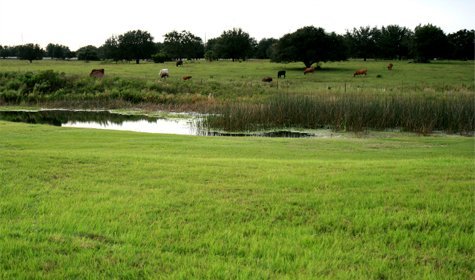Almost everybody that has pastures take their grass for granted, and it has been that way for many years. Few of our early day cattleman had enough time to look closely at their grass and think about what it needed. The demands of early pioneer life usually assigned their grass “crop” a low priority. The apparent endless growing potential of their grass gave these founding cowman a false sense of security.
Not enough of our early cattleman realized then, or for that matter even now, that grass needs more than the allotment of rain that we receive in order to produce a bumper crop for livestock. It’s been difficult for a society oriented toward cultivation to accept that management and the manipulation of foraging animals are the basic keys to production.
It is extremely important that enough leaves remain all during the growing season to produce food. Several factors influence how much a plant grows: Rainfall, Temperature, Soil Depth, Soil Texture, Fertility, Topography, and the ability of the plant to grow itself too. There are many times that even when all these factors are at optimum, a plant still can’t grow. Without a large enough food-producing factory within the plant; its leaves, the plant simply stalls out or even worse, just dies.
This is where the rubber meets the road in grass management. The only major factor affecting grass growth that is fully within your control, is the maintenance of the size of the leaf area. The leaf is the solar energy collecting factory that sustains the plant.
Take Half, LEAVE HALF!
Except for the grass that you fertilize and irrigate, all other growth factors depend on the Good Lord’s provisions. Overgrazed grasses simply cannot remain healthy, vigorous and productive any more than a feedlot steer can gain on maintenance feed. This is a point that I cannot emphasize enough, because I see evidence of it all over the county.
The effect of leaf removal on plant development has been studied and hashed over for years, and it is clear that grass production is substantially reduced when you remove more than half of the leaf volume by grazing or mowing during the growing season. Since spring is going to be upon us shortly, it is very important to remember that our active growing season in Austin County runs from about March to June, excludes the summer months, and then picks back up again from September to October. Of course these ranges are extended or shorted by rainfall and temperature, as we saw over the course of the last couple of years.
Roots are Essential
Plant root systems are unseen, but are completely vital for capturing moisture and minerals. Roots of tall native grasses like Little Bluestem and Big Bluestem can reach down 10 to 14 feet. Bermudagrass roots can grow to a depth of 6 feet or more depending on soil profile characteristics. However, the majority of the root system, 80% or more, is found in the top 6 inches of soil. To some degree, the volume of roots and the volume of leaves produced are in proportion. It takes a lot of root system volume to supply water to a large volume of leaves. Depth and volume of roots are influenced by grazing management. Research studies point out that when excess removal of leaves occur, it has a detrimental effect on root development. Please take this into consideration when you add grazing animals to your land, so as to make sure that you are not doing more harm to your land than good.
Brad Kieschnick is the District Conservationist for Natural Resources Conservation Service. He can be reached at 979-865-3139 x170.

